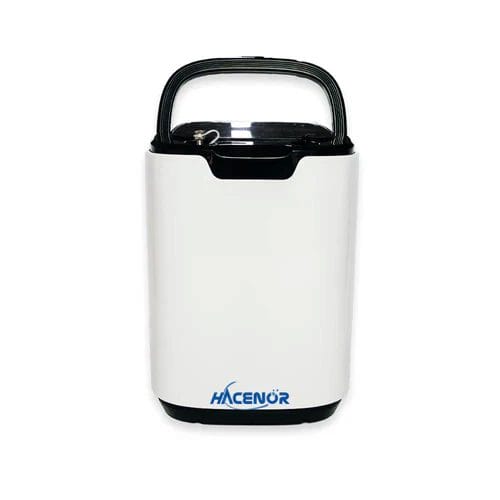[Last updated February 12, 2025]

When people think of life insurance, they typically think of a lump-sum payout to a loved one upon their death. And while that is its core premise, life insurance is an underrated and versatile financial tool that can also protect your own future.
From funding long-term care and managing the costs of a difficult medical diagnosis to acting as an investment vehicle with tax-advantaged savings, life insurance can help protect loved ones while also supporting your own financial needs.
What is life insurance?
Life insurance is a financial product that provides financial security to a person’s loved ones. The individual pays premiums in exchange for a payout to beneficiaries upon their passing. This predefined financial payout is known as the death benefit or face value of the policy. The death benefit will be paid out to designated beneficiaries upon the death of the named insured.
The death benefit helps cover expenses like funeral and burial costs, debts, and living expenses. There are different types of life insurance, including term life and whole life, that offer varying levels of coverage and benefits.
How does it work?
Life insurance operates on a straightforward principle: The policyholder pays premiums to keep the policy active. In return, the insurance company reserves a predefined financial payout for when agreed-upon events occur, conditions are met, or the policy term ends.
The policyholder generally continues paying premiums to keep the policy active until one of the following events triggers its payout or closure:
- Death benefit payout (face value): When the named insured passes away, the insurer pays the policy’s death benefit (face value) to the designated beneficiary.
- Life settlement: This type of settlement involves the policyholder selling their life insurance policy, typically to an investor or a third party, in exchange for a cash payout. Once the policy is sold, the buyer assumes ownership, including the responsibility for paying the premiums, and gains the right to receive the death benefit when the insured passes away. This option is often pursued by individuals who no longer need the coverage or have more immediate financial needs.
- Policy surrender: If the policyholder cancels the policy outright with the insurance company, they are paid the surrender value. The policyholder cashes out and no longer pays premiums. Surrender value is based on the value of the policy before maturity, typically the cash value minus any applicable fees or penalties. It is typically lower than what the policyholder would get in a life settlement.
- Rider activation: Riders are policy add-ons that allow access to the policy’s financial payout during the insured’s lifetime under predefined, agreed-upon circumstances. Some common riders include an accelerated death benefit, which makes the policy payable in the event of a terminal illness, or the guaranteed insurability rider, which allows the policyholder to increase the death benefit without a medical exam.
Long-term care rider
A long-term care (LTC) rider allows a life insurance policy to provide a portion of the death benefit to cover day-to-day care needs, such as in-home care, assisted living, or nursing home expenses. To activate this rider, certain eligibility requirements must be met, such as needing assistance with two or more activities of daily living (ADLs) or requiring care or supervision due to cognitive impairment.
An LTC rider is beneficial in that it serves a dual purpose: It provides the security of a death benefit for loved ones and a safety net for the insured if they face significant care-related expenses later in life — which can be especially helpful, considering health insurance and Medicare typically don’t cover the full cost of long-term care.
LTC riders are usually available only with permanent life insurance policies, like whole or universal life, since term policies lack the lifelong coverage and cash value features needed to make reserve funds accessible. Let’s take a closer look at these different types of life insurance.
Types of life insurance
There are three main types of life insurance policies: term, whole life, and universal life. Each comes with distinct features and varying price points.
What is term life insurance?
Term life insurance is fairly one-dimensional in scope: It provides a payout to the beneficiary upon the death of the named insured.
Term life insurance policies are active for a defined period of time (term) — typically 10, 20, or 30 years. If the “covered event” occurs during the term, the death benefit is paid out to the beneficiary.
Term life insurance is the most affordable option and is often a practical choice for those seeking to protect loved ones (beneficiaries) from being unable to meet financial obligations on their own, such as a mortgage or a child’s education costs. A married couple with a mortgage, for example, might opt for term life insurance policies. Should one of them pass away unexpectedly, the widowed spouse, after collecting the benefit, would have the financial means to pay off the home.
Term life insurance payment plans are commonly structured as either stepped (premiums increase over time at defined intervals) or level (premiums remain consistent).
Term life insurance is often the most basic form of life insurance — but it lacks many of the benefits permanent life insurance policies offer.
What is whole life insurance?
Whole life insurance is a type of permanent life insurance with no expiration date or defined term. As long as you continue to pay the premiums, the policy remains active until the death benefit is paid out.
Whole life insurance builds cash value over time, and the cash value of the policy also earns interest at a rate guaranteed by the insurer. Whole life insurance policies generally have level premium payment plans, so while premiums are generally the highest of all forms of life insurance, they do not fluctuate, nor are they subject to renewal premium hikes.
Permanent life insurance policies also offer a valuable financial planning feature called actual cash value (ACV), which functions like a savings account. The actual cash value is a portion of the death benefit that becomes accessible for use during the policyholder’s lifetime. Over time, this accessible portion of that money increases, giving policyholders greater flexibility to use their policy’s value to address financial needs as they arise.
What is universal life insurance?
Universal life insurance is another type of permanent life insurance, but it allows more flexibility — or uncertainty — than whole life insurance. Policyholders can adjust their premiums and death benefits. Any payments made that exceed what the cost of insurance adds to the cash value and can earn interest.
A universal life insurance policy’s cash value can be invested, generating returns (or losses) tied to market performance, or earn a guaranteed but oftentimes lower interest rate if provided by the carrier.
Managing a universal life insurance policy requires more proactive involvement and carries risk. For example, in a down year for the market, the policyholder may have to pay higher premiums to compensate for the shortfall. Alternatively, in a good year for the market, the actual cash value of the policy can make significant gains, allowing the policyholder to forgo paying premiums at all.
Here’s a quick comparison of term, whole, and universal life insurance policies:
| Policy type | Expiration | Actual cash value? | Cost | Premium structure |
| Term life insurance | Typically 10, 20, or 30 years | No | $ | Stepped or level |
| Whole life insurance | Never; permanent | Yes | $$$ | Level |
| Universal life insurance | Never; permanent | Yes | $$ | Variable |
How much does it cost?
The cost of life insurance depends on various factors assessed during underwriting, a process companies use to determine an individual’s eligibility for coverage as well as their premium amounts.
Some factors that influence life insurance premium costs include:
- Age.
- Health and family medical history.
- Lifestyle.
- Gender.
- Driving record.
- Policy type.
- Coverage amounts.
- Occupation.
- Credit.
Generally, a 42-year-old woman with no diagnosed chronic illnesses will have lower premiums than a 66-year-old man managing a long-term illness. However, if that same woman is also a smoker, the equation changes.
Additionally, the premium payment structure plays a significant role in the overall cost of the policy and can include:
- Level premiums: The cost remains defined and consistent over time but is often initially higher than other forms of premium payment structures.
- Stepped premiums: Built-in premiums increase over time at defined intervals (for example, every five years).
- Variable premiums: The price of premiums is subject to change depending on certain external factors, such as stock market performance and federal interest rates.
Life insurance costs vary widely by policy type, with term life being budget-friendly but limited in scope and permanent options, like whole or universal life, offering more benefits for a higher cost.
How to get life insurance
To purchase a life insurance policy, consider your financial needs, including providing security for others and planning for your own future.
Do your research and choose a reputable insurer that fits your budget and goals. It may be worth getting quotes from a few different companies, because underwriting criteria vary between companies, and rates can, too.
Some things you may want to ask about include:
- Death benefit.
- Premium payment structure.
- Riders.
- Exclusions.
- Surrender fee structure (permanent policies only).
- Withdrawal policies (permanent policies only).
- Interest accrual rates (permanent policies only).
- Actual cash value accrual schedule (permanent policies only).
Once you’ve selected an insurance provider and policy that meet your criteria, you’ll go through an underwriting process, which may include a medical exam and a detailed questionnaire about your lifestyle and financial picture.
If approved, you pay the first premium, and your policy goes into effect.
Life insurance terminology
If you’re thinking about getting a life insurance policy, here are some key terms to know that can help you as you navigate the shopping process.
- Named insured: The person whose death (i.e., the “covered event”) triggers the policy to pay out the death benefit to the beneficiary.
- Beneficiary: The person (or entity) that receives the payout (death benefit) after the insured’s death. The beneficiary is designated by the policyholder.
- Death benefit (face value): A fixed dollar amount (coverage) paid to the beneficiary upon the named insured’s death.
- Premium: The price the policyholder pays to keep the life insurance policy active — typically paid monthly, quarterly, or annually.
- Lapse: If premiums aren’t paid, the policy lapses and the death benefit is no longer payable.
- Pro tip: It’s fairly common for life insurance policies to lapse in the months following the death of the named insured, especially if they were the policyholder. However, if their death occurred while the policy was still active, the insurer is still obligated to pay the death benefit — even if the policy has lapsed by the time the claim is filed.
- Pro tip: It’s fairly common for life insurance policies to lapse in the months following the death of the named insured, especially if they were the policyholder. However, if their death occurred while the policy was still active, the insurer is still obligated to pay the death benefit — even if the policy has lapsed by the time the claim is filed.
- Grace period: Most policies offer a grace period, typically 30 to 60 days after a premium is missed, during which the policyholder can make a payment to prevent a lapse in coverage.
- Exclusions: Specific conditions that void the policy’s death benefit payout.
- (Actual) cash value: Permanent life insurance policies build cash value over time, typically starting after five to 10 years. This value can supplement retirement income, secure loans, or fund long-term care, though withdrawals reduce the death benefit. Withdrawals up to the total premiums paid are tax-free.
- Riders: Add-ons that provide additional benefits or coverage under specific conditions.
- Surrender charges: Surrender charges are cancellation fees, typically a percentage of the cash value, that decrease over 10 to 15 years of the policy’s term.
Navigating the complexities of policies, riders, and settlement options can feel overwhelming, but doing so also gives you a chance to get acquainted with more avenues to plan for your financial future. Speaking with an experienced insurance consultant or financial advisor can help you navigate policy options, understand costs, and tailor coverage to meet your financial goals.
Once you understand its features and possibilities, life insurance can be a powerful tool for shaping a more stable and confident future. After all, the decisions you make today could profoundly shape the tomorrow you’re building for yourself and those you care about most.
This information is for educational purposes and is not legal, financial, tax, or investment advice. It should not be substituted for information from professionals authorized to practice in your area. You should always consult a suitably qualified professional regarding your specific situation.








